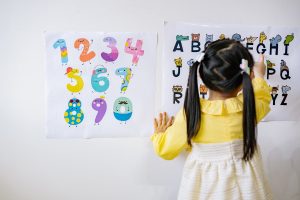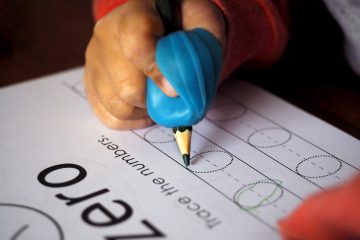
To address the needs of struggling readers, teachers must have a variety of tools and strategies at their disposal. It’s important to understand that every child learns differently. Not only will they learn differently, but they will also respond differently. Teachers need to test their assumptions about the child and their history when they do not seem to be learning. One child may have difficulty reading aloud, while another may have trouble understanding what they read. To understand what strategies are best for a class, the teacher must understand how each child learns.
The most common reason children struggle is they do not comprehend what they read. Here are ways to support children who struggle with reading comprehension:
1) Encourage
Encouragement is a very simple and effective way for adults to help struggling students. Teachers often use praise, but this can lead to problems because children can become dependent on praise, and when it stops, the child may stop trying. Children who struggle with reading need encouragement from adults. Adults should be aware of their struggles and recognize when children are making progress. Adults can tell jokes or talk about positive aspects of the student’s life to encourage.
2) Provide Technology
The internet has made it possible for struggling readers to get immediate feedback on the screen and in the form of emails, phone calls, and online reviews. It has also become easier for parents to teach their children how to use technology. Teachers can provide struggling readers with the information they need to become better readers.

Teaching children how to use technology in the classroom is one of two ways that adults can provide struggling readers with the information they need. The other is taking pictures or videos of specific words in sentences as they read them aloud. Before taking these pictures or videos, struggling readers should be given an example of what they are looking for. This will ensure they know what the word looks like and how it is used correctly.
3) Set Expectations
Educators should set expectations for struggling readers to understand if they are underperforming or not. It is important that educators do not set impossible goals but instead set reasonable goals so children will feel confident and safe when working on their reading skills. Also, it is important to hold children accountable for their learning and reading skills. When teachers design reading centers, they should create questions that will help struggling readers understand what they understand and comprehend.
Setting expectations for students who struggle with reading can also be done for students who have difficulty focusing on their work or students who feel frustrated when doing schoolwork.
4) Try Different Activities
Adults must try to find ways to help struggling students succeed in all areas of their life, including reading. This has been seen in the case of students who struggle in school but do well in sports. It is important to find ways to help struggling readers learn to read better, regardless of their other areas of success. Many teaching methods will go a long way in helping struggling readers. One of the best ways educators and parents can help support struggling readers by encouraging them to try different activities.

Different types of activities can support students in the areas where they are weak. This can be seen with students who struggle with reading comprehension. Often, these students are strong writers but struggle to read and understand what they have read.
Other instructional methods to support struggling readers in the classroom are increasing vocabulary, increasing fluency, increasing comprehension of the main ideas in a text, and reinforcing correct grammar. These methods will help struggling readers progress more in their reading skills.
5) Participate in the Class
Children feel comfortable when they read. They need adults who care enough to help them. Adults need to interact with struggling children in ways that will make them feel welcome and included. They do not have to participate in all reading activities but participating in a few will make the child more aware of what is expected. If adults participate in the reading activities and read to them, the struggling child will feel more comfortable.
Adults should encourage struggling readers to share their thoughts and opinions when participating in reading activities. Each struggling reader should be encouraged to decide on a book that they would like to read and ask them questions about it as they read.
For educators to be successful, it is important for them to utilize helpful strategies for struggling students to prevent them from putting down their books.
6) Individualize
Children who struggle with reading need instruction tailored specifically to their needs. This means they may need different levels of instruction, different books or materials to read like Montessori-friendly books, or additional time on testing to succeed academically.
More and more educators realize that individualized instruction is the only way to provide this type of support. Children who struggle with reading have specific learning needs. The most common skills they need to develop include decoding strategies, fluency, comprehension, and memory. To challenge their reading skills, teachers must know which strategies they should be teaching.
7) Group Children
Teachers should group struggling students with other struggling students for reading groups and classroom discussions. This will help children learn from one another and help them all succeed together.
Struggling readers aren’t given the same respect as kids who aren’t struggling. Teachers tend to focus on the bright minds while pushing aside those who might need extra help with reading comprehension. This can make a struggling student feel embarrassed, and embarrassed students who struggle with reading are even more ashamed to admit they are struggling.
Several studies have shown that children do better in groups when they are taught how to read and write simultaneously. Helping kids learn how to read and write at the same level gives all kids a chance to succeed.
8) Provide Pictures

Children who struggle with reading have difficulty understanding what they are reading. This is because they cannot visualize what the words are describing or use context clues to better understand their meaning. Pictures can help struggling children better understand words but should not be used as a crutch for them to understand what they are reading. The pictures need to be somewhat related to the text that is being read so that struggling readers can better relate the two and make meaning of the words they sometimes cannot understand on their own.
Visuals are another means of support that can encourage struggling readers to succeed. The most effective visuals include a visual and an auditory component and an example or definition of what is included in the visual. The images must be clear because struggling readers can become dependent on visuals as a crutch.
9) Use Read-Alouds
Children who struggle with reading need more practice, and reading is a great way to get that practice. Reading aloud is a good way to help struggling readers learn from others who can read well and explain the text’s content in a way that struggling readers can understand.
10) Use Questions
The best way to help struggling readers read better is to make it less monotonous and more fun for them. This can be accomplished through questions asked in groups or one-on-one. Asking questions can also help adults provide feedback so children can learn from their mistakes.
- Ask open-ended questions. Students should not just be told what to do, but instead, have them make decisions themselves. Open-ended questions are a great way to encourage students think independently on their own. For example, why did she leave? (This gets the reader to talk about their own thoughts and feelings when they read).
- Ask multiple questions related to one theme so that students can figure out how they connect with each other.
11) Use Humor
Try to find ways to make struggling students laugh in order to make the process more enjoyable for them. This helps them finish their work faster and makes learning easier for all students involved when adults use humor in the classroom.

Learning can be tedious, particularly for students who do not find pleasure in learning because it is not challenging or because it does not teach them anything. In some cases, students may even think that the teacher is boring and the class is not engaging enough. It can be hard to keep struggling readers motivated; however, humor can help teachers stay connected to their class and make learning more interesting. Schools can employ humor as a teaching tool by giving struggling readers funny tasks to complete in the classrooms.
Author Bio:
I’m Andrea Gibbs. Born, raised, and still living in New York. I’m a work-at-home mom with a background in business development, strategy, and social media marketing. I’m a blog contributor at Montessori Academy to motivate and educate other parents about how they can get their children ahead of the game in school.


